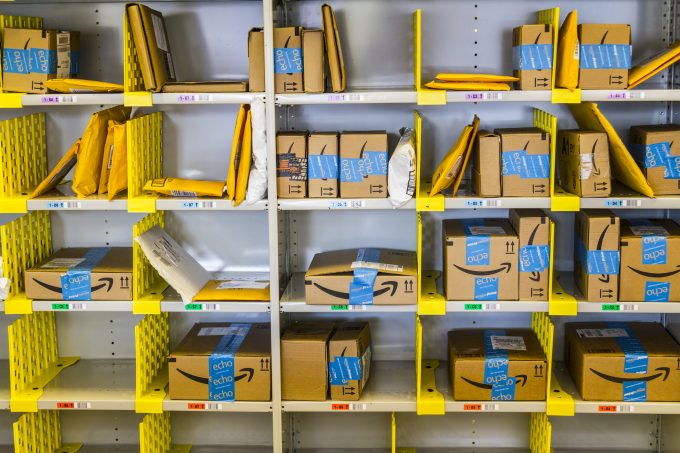Amazon goes large with electric trucks order to aid UK decarbonisation
Amazon has placed the largest order for electric trucks seen in the UK, and has ...
XOM: GO GREEN NOWKNIN: BOUNCING OFF NEW LOWS HON: BREAK-UP PRESSURECHRW: UPGRADESZIM: LAGGARDFWRD: LEADINGMAERSK: OPPORTUNISTIC UPGRADETSLA: GETTING OUTDSV: DOWN BELOW KEY LEVELLINE: DOWN TO ALL-TIME LOWS AMZN: DEI HURDLESAAPL: DEI RECOMMENDATIONAAPL: INNOVATIONF: MAKING MONEY IN CHINAMAERSK: THE DAY AFTER
XOM: GO GREEN NOWKNIN: BOUNCING OFF NEW LOWS HON: BREAK-UP PRESSURECHRW: UPGRADESZIM: LAGGARDFWRD: LEADINGMAERSK: OPPORTUNISTIC UPGRADETSLA: GETTING OUTDSV: DOWN BELOW KEY LEVELLINE: DOWN TO ALL-TIME LOWS AMZN: DEI HURDLESAAPL: DEI RECOMMENDATIONAAPL: INNOVATIONF: MAKING MONEY IN CHINAMAERSK: THE DAY AFTER

Amazon launched its third Prime Day in the US yesterday, with the e-commerce behemoth’s air freight fleet getting its first run-out.
In the lead-up to the sales “bonanza” – aimed at tackling the summer lull – Amazon said “the planes are fuelled and ready to support Prime Day in the US for the first time”.
Launched in 2016 at the Seattle Seafair Air Show, Prime Air Cargo comprises 25 aircraft (Boeing 767-300s and 767-200s) leased from Atlas Air and ATSG, with a further 15 on order, and covers 12 US airports.
While Amazon says the fleet is there to complement its logistics partners, including UPS and FedEx, its development again signals the company’s intent to bring logistics operations inhouse.
Vice president Amazon Prime Greg Greeley said: “Our fulfilment centres are loaded, our operations associates are ready and our transport partners around the world are waiting for the first order.”
Much like “Singles Day” in China for Alibaba – an event hijacked by the Chinese company in 2009 and turned into the biggest shopping day of the year – Prime Day has proved a success for Amazon.
Last year it surpassed its Black Friday and Cyber Monday sales for the previous winter, but the run-up to the event can have a negative impact on suppliers due to an increase in volumes.
Online freight forwarder Flexport said that several weeks before Prime Day, it saw a “significant increase” in the volume of goods being sent to Fulfilment By Amazon (FBA) warehouses.
“This can result in delays and, depending on the urgency of your shipments, extra fees in order to get your goods to FBA in time for Prime Day,” added Flexport.
“Amazon warehouses require delivery appointments and with products flooding in before Prime Day, these become harder to get – especially for floor-loaded FCL shipments.”
The forwarder also noted that while Amazon’s less-than-truckload rates were low, before Prime Day the company’s truckers found themselves “stretched pretty thin”.
“If you utilise Amazon LTL, you may need to wait up to three weeks for your goods to be delivered,” warned Flexport, which also offers LTL services. “Similarly, staff at Amazon’s warehouses work as quickly as they can, but trucks often wind up waiting for their turn to pull up to the dock, and this can result in delays and trucking wait fees.”
However, with the e-tailer continuing to expand its footprint – yesterday it announced plans to open a new fulfilment centre in Orlando – it will be hoping to ease congestion.
The 850,000 sq ft facility will be developed at Lake Nona where 1,500 staff will pick, pack and ship small items to customers.
Comment on this article